By Stephanie Namahoe Launiu
Big Island Restaurants
Hawaiian Culture
Kauai Restaurants
Maui Restaurants
Oahu Restaurants
Visiting Hawaii
This article was originally published on April 6, 2025, and was updated Oct. 9, 2025.
Local Hawaiʻi foods are comfort foods for locals. In the Hawaiian language, a local is called a kamaʻāina — a child of the land. It’s someone who was born and raised in Hawai‘i, but is not Hawaiian.
Unlike other states, like California, where residents are called Californians, or Texans from Texas, you are not considered Hawaiian just because you live in Hawai‘i. Native Hawaiians are indigenous to Hawaiʻi. When immigrant groups from places like China, Japan, Korea, Portugal and the Philippines came to work the sugar plantations in the 1800s they brought their foods and styles of cooking. These foods, combined with traditional Hawaiian foods became Hawaiʻi local food. Many visitors think “local food” is Hawaiian food, but that is incorrect. If you want a sense of what local food in Hawaiʻi is, search these dishes out.
You can find these dishes all over the islands. If we highlight a specific restaurant, it’s because they’re known for serving an exceptional version. Want to try the best one for yourself? Ask your hotel — or better yet, ask a local. Chances are, they’ll know the best spot in town.
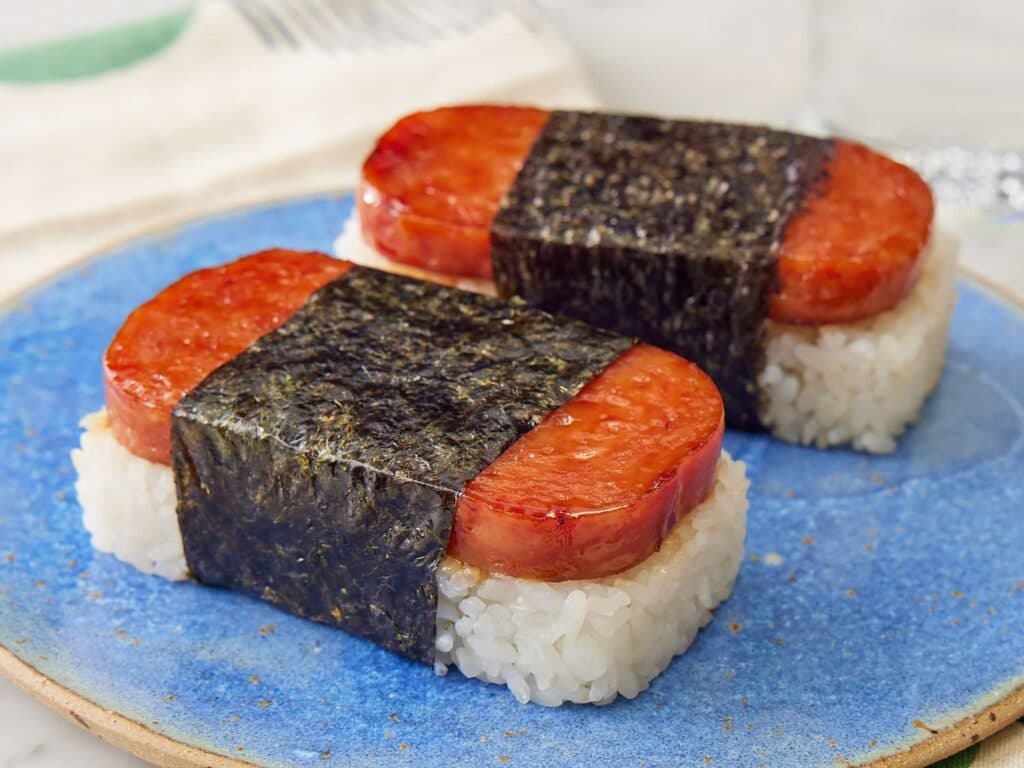
Hawai’i is the state that eats the most SPAM. Photo by Hawaiianscribe.
Hawaiʻi eats around 7 million cans of SPAM a year – the highest SPAM consumption in the U.S. During World War II, SPAM was shipped to the islands to feed the military — and quickly became popular with the locals.
It’s relatively inexpensive, versatile, nonperishable and has become an essential part of local food culture. Locals stock up on SPAM and watch for sales. They use it in everything from the ubiquitous spam musubi to fried rice, breakfast burritos, omelets, instant noodles, pizza, breakfast sandwiches and more.
Spam musubi is one of Hawai‘i’s favorite comfort foods. It’s a slice of SPAM nestled between two layers of white rice, wrapped in a sheet of nori (Japanese seaweed), sometimes topped scrambled eggs. You’ll find it everywhere, from grocery stores to 7-Elevens and gas stations.
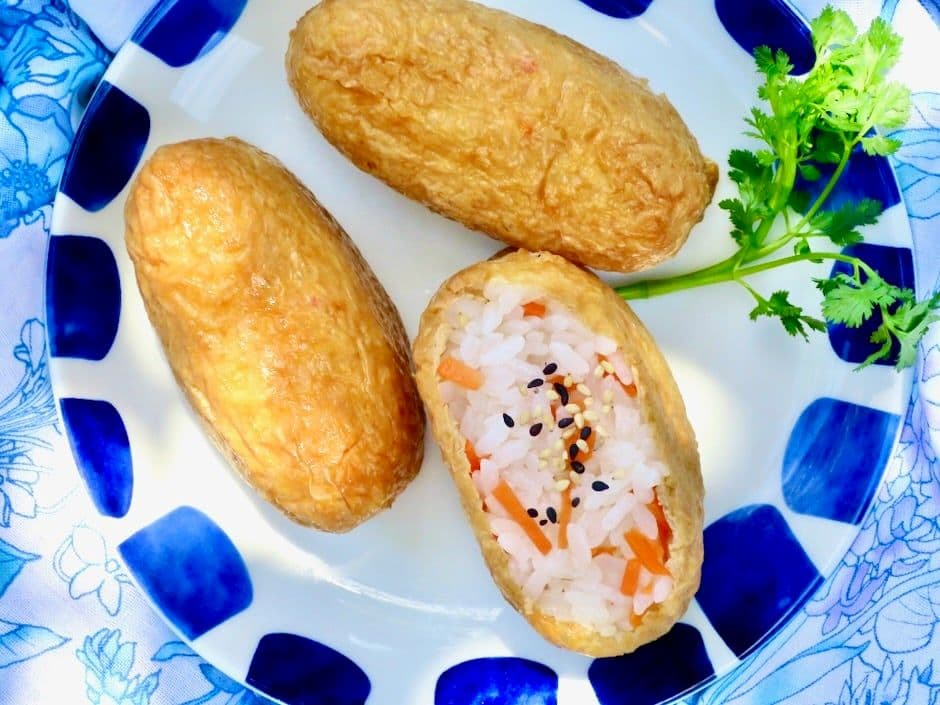
Cone sushi is a beloved Japanese food. Photo by Hawaiianscribe.
Cone sushi is the nickname for inari sushi. It’s a favorite in Hawai’i that you’ll find at potlucks and local gatherings. Sushi rice is stuffed into seasoned deep-fried tofu pockets or “cones.”
Cone sushi is a little harder to find than Spam musubi. They’re sold in grocery stores near the ready-made sandwiches, but those aren’t the ones you want to buy. Once cone sushi is refrigerated, it loses its flavor and the rice hardens.
The best cone sushi are at Japanese lunch shops called “okazuya” or ordered as takeout from a Japanese restaurant. In Hilo on the Big Island, Hilo Lunch Shop has the best cone sushi. Hands down.

Loco moco first became popular in Hilo. Photo by Hawaiianscribe.
The loco moco story dates back to the 1940s, when a group of teenage surfers in Hilo wanted something cheap, filling, and loaded with carbs. They went into a local diner and ordered a hamburger on rice, covered with gravy.
Today, a classic loco moco includes two scoops of rice topped with a hamburger patty and a fried egg and smothered in brown gravy. It’s unclear when the egg was added or how it got its name, but we’re not mad about it.
Cafe 100 in Hilo claims to be the home of the loco moco and has over 30 variations on its menu.
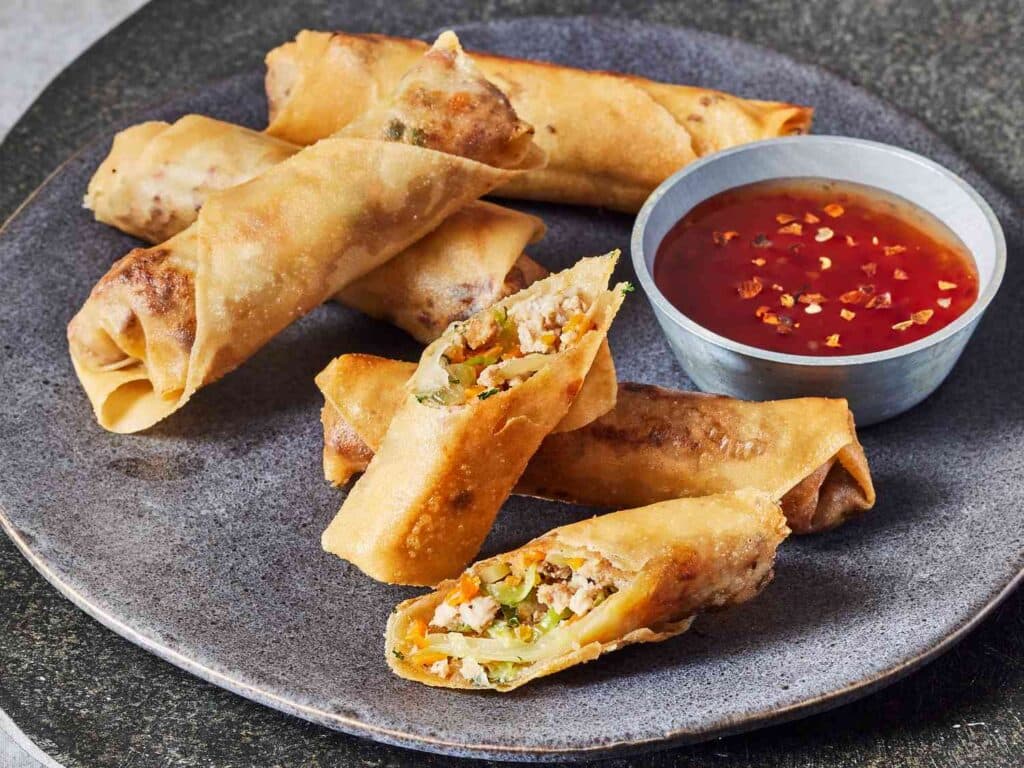
Lumpia came from the Philippines. Photo Credit by Hawaiianscribe.
Lumpia is a type of spring roll filled with a savory mixture of pork, cabbage and other veggies. They’re a deliciously crispy appetizer from the Philippines.
Some of the best come from roadside vendors. I had one the other day filled with mashed, sweet ripe bananas. Superb.
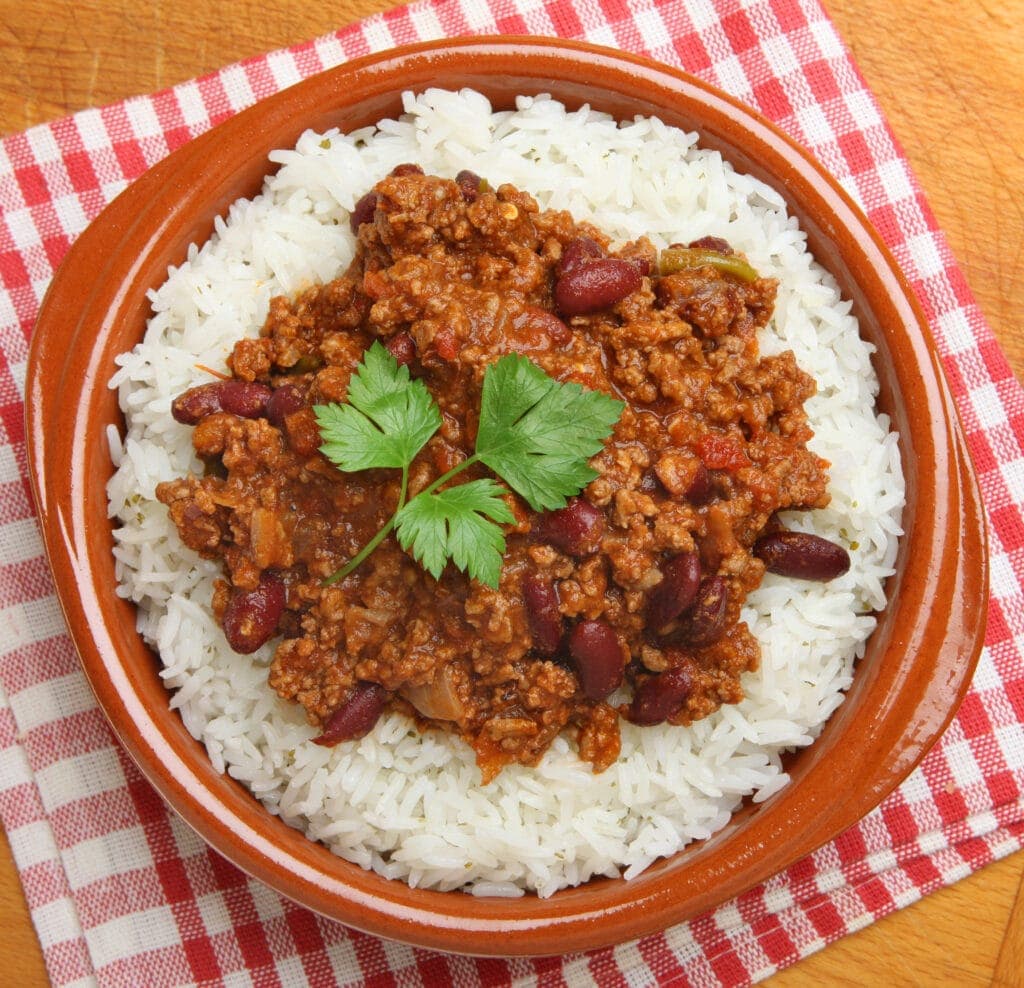
Chili and rice. Photo by Shutterstock.
A classic bowl of chili — made with ground beef, beans and spices — served over a mound of white rice is a beloved favorite in Hawai‘i. Many locals take it up a notch by adding spoonfuls of mayonnaise on the side. Sometimes, in addition to hamburger meat, the cook will also toss in slices of fried Portuguese sausage for extra flavor. Green onions and shredded cheese are classic toppings.
Zippy’s Restaurants sells a popular plate of chili and rice, which is also available in the grocery store frozen aisle.
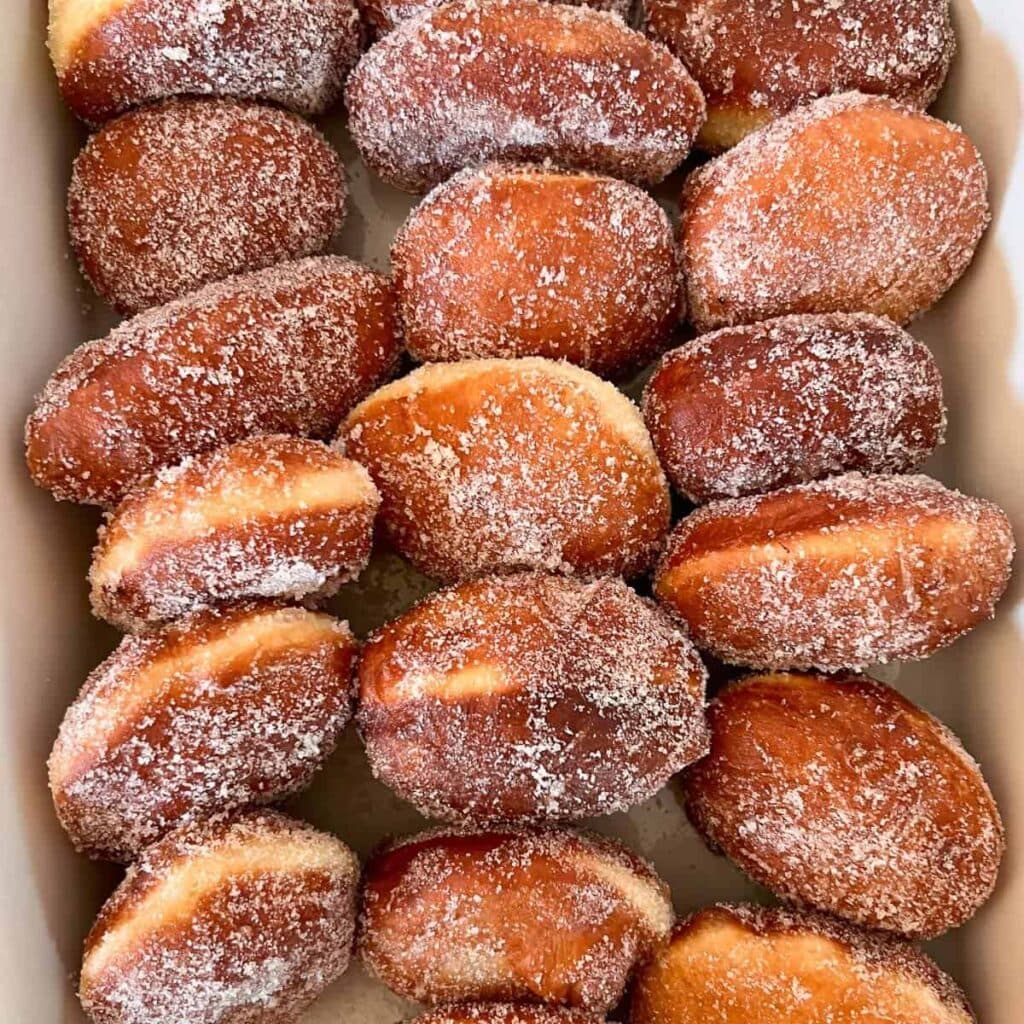
Malasadas. Photo courtesy of Leonard’s Bakery.
A malasada is a Portuguese donut without a hole, made from lemon zest–flavored yeast dough, coated in granulated sugar and cinnamon and fried to golden perfection. Plantation workers from the islands of Madeira and the Azores brought malasadas to Hawai‘i.
Today, you’ll find all kinds of flavors — some filled with cream or pudding, others made from taro or sweet potato dough. Each version is a unique take on the beloved treat.
Leonard’s Bakery in Honolulu has great malasadas.
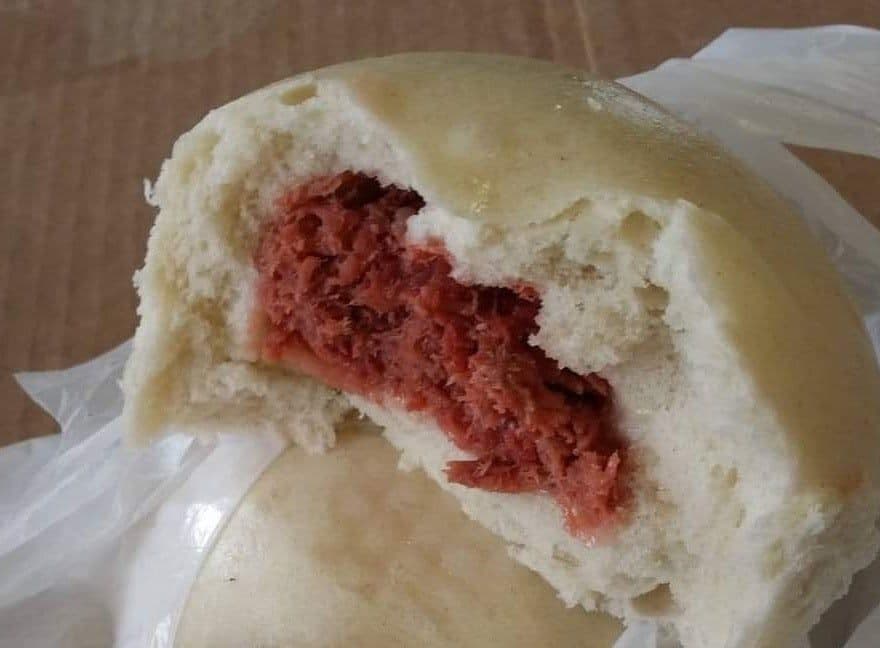
Manapua is made daily at Chun Wah Kam Noodle Factory. Photo courtesy of Chun Wah Kam Noodle Factory.
Manapua is the local term for char siu bao — a big, fluffy bun filled with char siu – Cantonese-style barbecued pork that’s been steamed or baked with a signature red glaze. When Hawaiians first tasted the Chinese delicacy, they called it “mea ʻono puaʻa,” meaning “delicious pork cake.” Over time, the phrase evolved into the beloved local term: Manapua.
In the early 20th century — long before lunch plates and food trucks — neighborhoods had a “Manapua Man” who would walk the streets shouting “Manapua!” while carrying a pole across his back with buckets of freshly baked buns dangling from each side.
Chun Wah Kam Noodle Factory is the #1 place to get Manapua.

Kalua pork and cabbage is an island favorite. Photo by Hawaiianscribe.
Kalua pork is one of the traditional Hawaiian foods that’s essential to the local food culture. It’s slow-cooked in an underground oven called an imu. Somewhere along the line, someone tossed a head of cabbage into the pot and boiled it with the pork until the cabbage was falling apart — soft, tender, and full of smoky, meaty flavor.
Season it with a little ground rock salt — known locally as Hawaiian salt — serve it with a scoop of white rice and you’ve got dinner. Today, you can even buy kalua pork by the pound at most grocery stores.
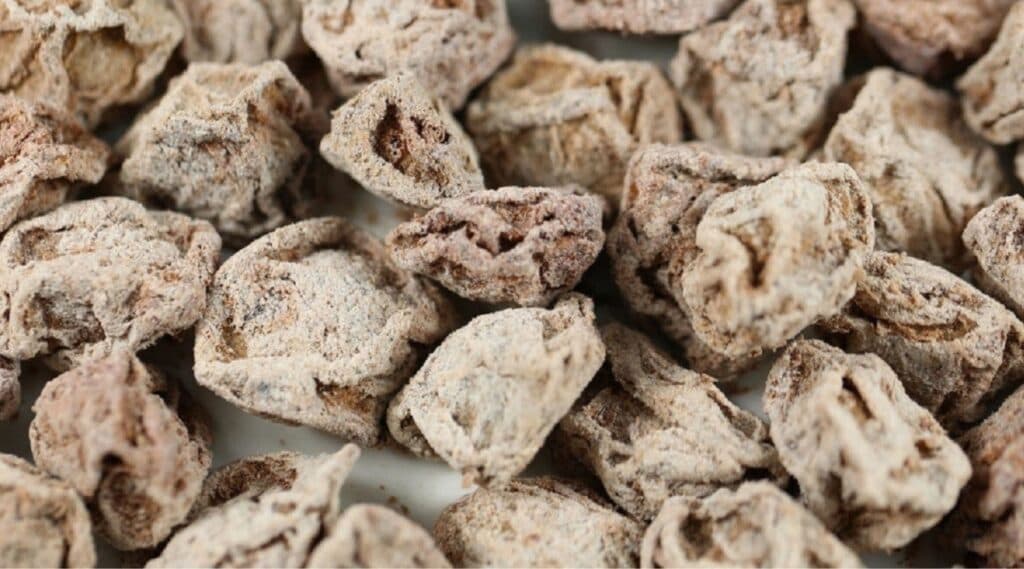
Li hing mui is a salty and sour dried plum. Photo by Hawaiianscribe.
Chinese immigrants from Guangdong Province brought li hing mui to the islands. Meaning “traveling plum,” these dried, preserved fruits were ideal for long journeys — like the trek across the Pacific Ocean that brought many settlers to Hawai‘i.
Today, li hing mui is a popular snack known for its lip-puckering, distinctive flavor — a blend of sweet, salty, and tangy. You’ll find it at most grocery stores and drugstores across the islands. My mouth is watering just thinking about it.
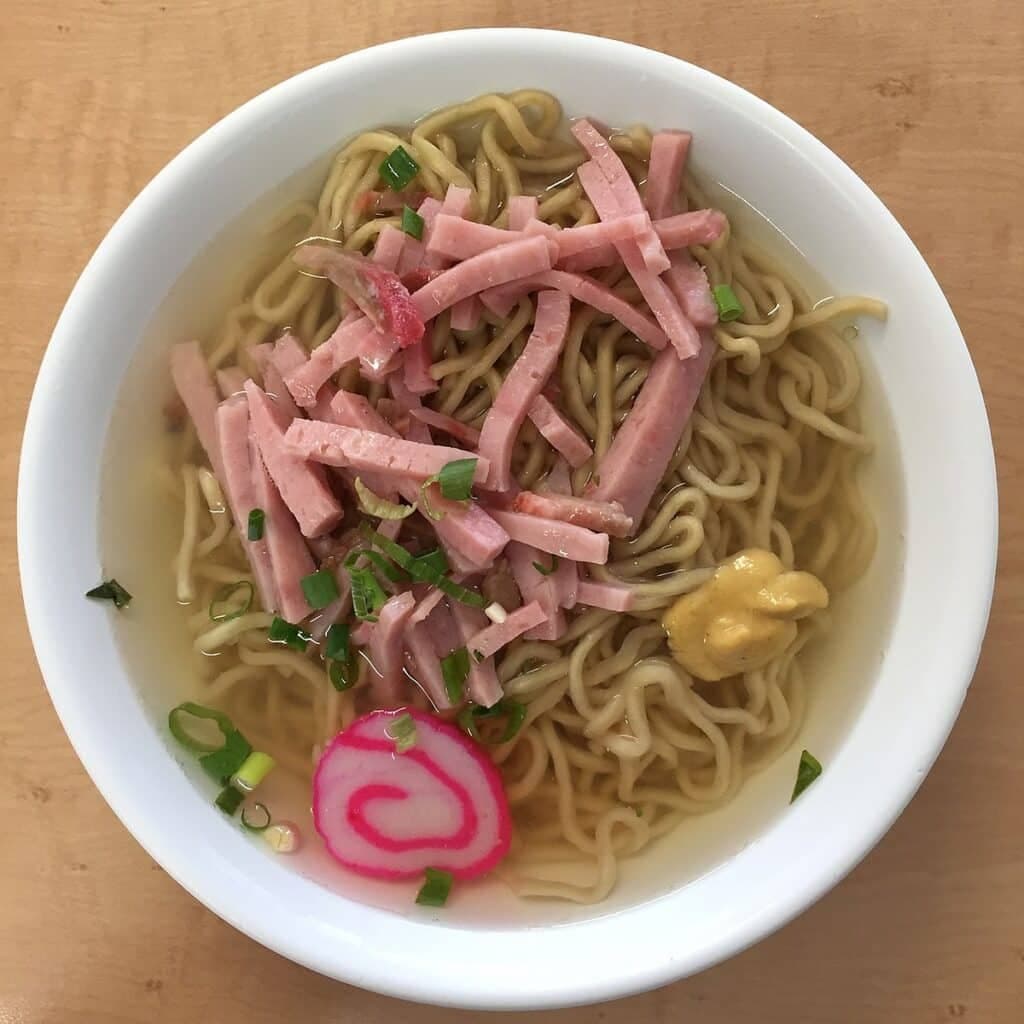
Saimin noodles are different than ramen noodles. Photo by Hawaiianscribe.
Ask any local, and most will pick saimin over ramen as their favorite noodle dish. The story goes that when Japanese immigrants came to Hawai‘i to work on the plantations, they tried to recreate the ramen they missed from home. They came up with noodles made from eggs and wheat flour, served in a hot dashi broth. Traditional Japanese ramen doesn’t use eggs, and the broth is typically made from chicken or fish, mushrooms and dried seaweed. As a result, saimin noodles are thicker and chewier than ramen.
Saimin is often garnished with sliced hard-boiled eggs, bok choy, sesame oil, soy sauce, dried seaweed, Portuguese sausage, dried onions, fishcake, SPAM and green onions. While ramen can be found all over the world, saimin noodles are mostly unique to Hawai‘i.
Hamura Saimin Stand in Līhu‘e, Kaua‘i has been serving its beloved saimin since 1952. It’s nothing fancy — just seriously good saimin. Look for the little blue house. Inside, it feels like a retro diner with communal counter seating. Order saimin, and if you want the perfect side dish, try the fried won tons. Just don’t leave without getting the lilikoʻi chiffon pie — a light passion fruit–flavored dessert topped with meringue. It’s outrageously delicious.
Now that you know what locals love to eat, you’ve got the perfect foodie bucket list to check off before leaving the islands.
Join our newsletter for travel inspiration, insider tips and the latest island stories.
By subscribing, you agree to receive emails from Hawaii.com. You can unsubscribe anytime. See our Privacy Policy.